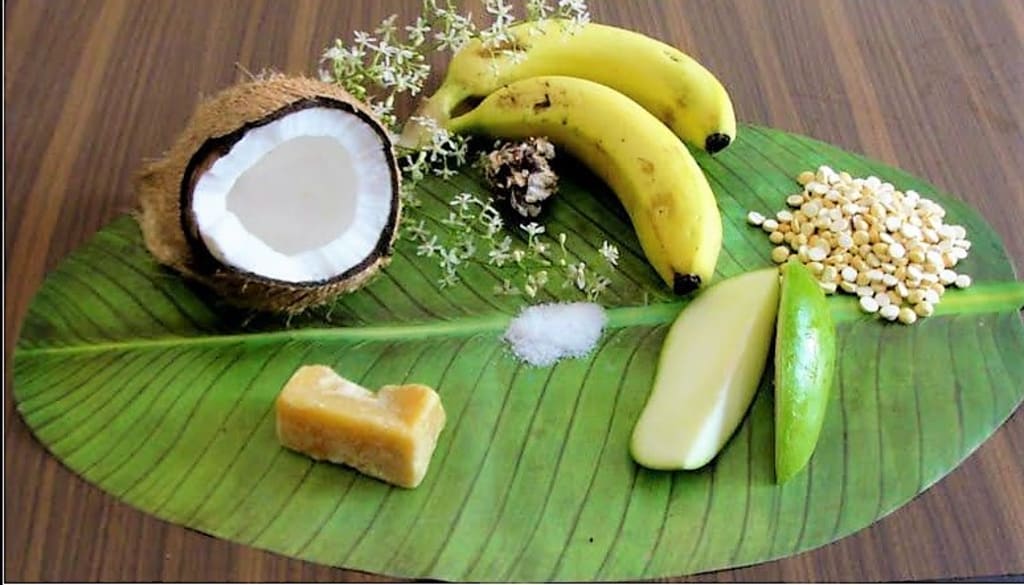Joyous Celebration of Ugadi
Discover the Traditions and Customs of the Telugu New Year Celebration

Once upon a time, in the southern part of India, the people eagerly awaited the arrival of the New Year, which was celebrated as Ugadi. It was a time of joy, celebration, and renewal. The air was filled with the sweet aroma of mango flowers and the sound of temple bells. The houses were decorated with fresh mango leaves and colorful rangolis.
The festival of Ugadi marked the beginning of a new year and the arrival of spring. It was celebrated on the first day of Chaitra, the first month of the Hindu calendar. The festival was also known by other names in different parts of the country, such as Gudi Padwa in Maharashtra, Vishu in Kerala, and Baisakhi in Punjab.
The preparations for Ugadi began several weeks in advance. The women of the household would start cleaning the house thoroughly, washing curtains, bed sheets, and carpets. They would decorate the house with fresh flowers, rangolis, and mango leaves. The men would start making arrangements for the festivities, such as buying new clothes, making sweets, and arranging for puja items.
On the day of Ugadi, the entire family would wake up early in the morning, take an oil bath, and wear new clothes. They would then gather in the puja room for the Ugadi puja. The puja was conducted by the head of the family, who would offer prayers to the gods and seek blessings for the family.
After the puja, the family would sit down to a sumptuous breakfast, which was an important part of the Ugadi celebrations. The breakfast would consist of traditional dishes, such as holige (sweet flatbread), pulihora (tamarind rice), and bobbatlu (sweet flatbread with a filling of jaggery and lentils). The meal was served on banana leaves, which added to the festive atmosphere.
Once the breakfast was over, the children would go out to play with their friends, while the adults would visit their relatives and friends to exchange greetings and gifts. The streets would be filled with people in their new clothes, exchanging hugs and sweets, and wishing each other a happy new year.
In the evening, the entire family would gather again for a special dinner, which was another important part of the Ugadi celebrations. The dinner would consist of traditional dishes, such as pulao, sambar, and rasam. The meal was accompanied by a variety of chutneys and pickles.
After the dinner, the family would gather together to watch the Ugadi pachadi ceremony. The pachadi was a special dish made with six different tastes – sweet, sour, bitter, salty, tangy, and spicy. The dish symbolized the six different emotions that one experiences in life – happiness, sadness, anger, fear, surprise, and disgust. The family members would take a spoonful of the pachadi and taste each of the different flavors, reminding themselves that life was a mixture of different experiences.
As the night wore on, the family would light lamps and candles to mark the end of the festivities. They would pray for peace, prosperity, and happiness in the coming year, and hope that the new year would bring with it new beginnings and opportunities.
The celebration of Ugadi was not just limited to the family, but it was also a time for the community to come together. The community would organize various cultural events, such as music and dance performances, and also distribute food and clothes to the poor.
In conclusion, the festival of Ugadi was a time for renewal and rejuvenation. It was a time for families to come together and celebrate the joys of life. It was a time for the community to come together and spread happiness and love. The traditions and customs of Ugadi have been passed down.
About the Creator
Sarah Williams
I'm Sarah Williams ,who is a professional freelance writer with 2+ years of experience in crafting compelling content for businesses and individuals. With a passion for storytelling and a keen eye for detail.






Comments
There are no comments for this story
Be the first to respond and start the conversation.